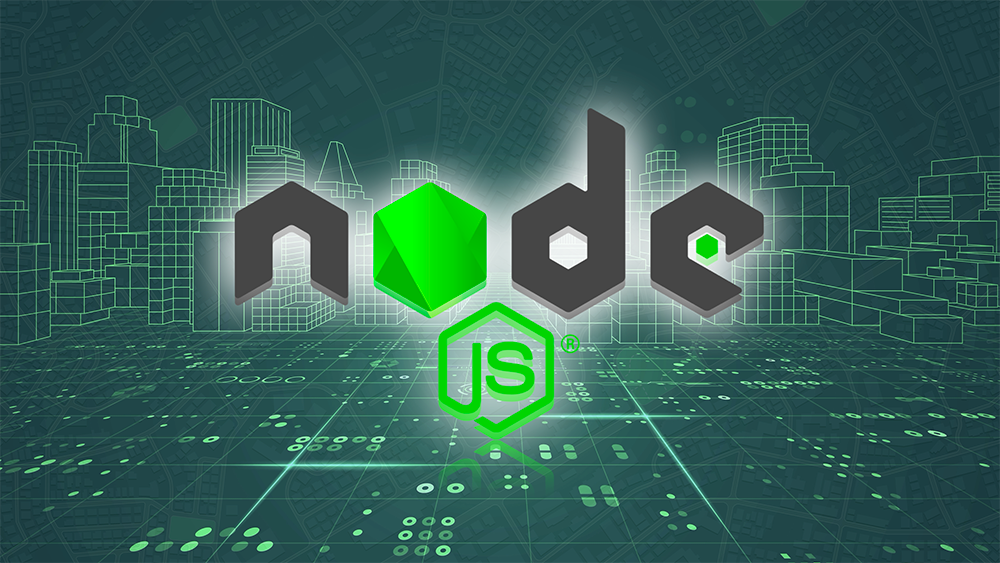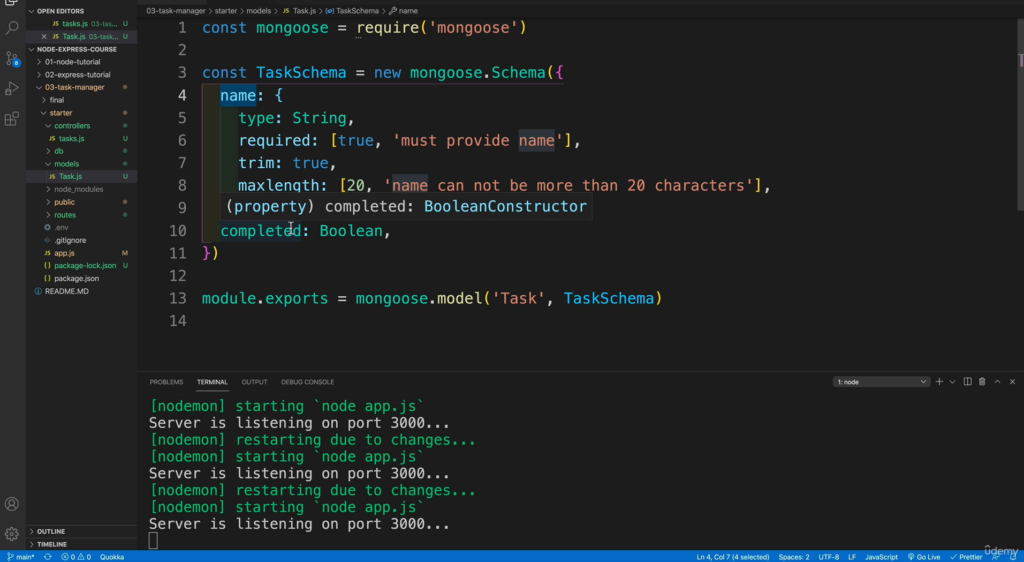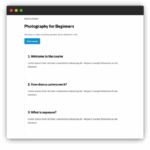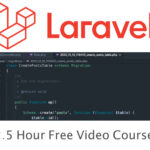I remember a time, not too long ago, when the world of web development felt like a vast, confusing ocean. I knew I wanted to build things, real things that people could use, but every tutorial seemed to speak a language I barely understood. Front-end, back-end, databases, APIs – it was a jumble of jargon that left me feeling more overwhelmed than inspired.
Then, one day, I stumbled upon Node.js. The idea of using JavaScript, the language I was already dipping my toes into for the front-end, to build powerful server-side applications was incredibly appealing. It promised to bridge the gap, to let me speak one language across the entire web stack. But where do you even begin to learn something like that? The answer, for me, was finding the right Node Course.
The Spark: Why Node.js Caught My Eye
Before diving into finding a Node.js tutorial or a full-blown Node.js course for beginners, I had to understand why it was worth my time. For starters, the thought of context-switching between JavaScript for the browser and another language like Python or PHP for the server felt daunting. Node.js offered a unified language. This wasn’t just about convenience; it meant I could leverage my growing JavaScript knowledge and apply it to a whole new domain.
I heard whispers about its speed, its non-blocking I/O, and its ability to handle many concurrent connections – fancy terms that, at the time, just translated to "it’s fast and powerful." I was also seeing more and more job postings asking for Node.js skills. It became clear: learning Node.js wasn’t just a curiosity; it was a pathway to building modern, efficient web applications and a valuable skill for any aspiring developer.
Navigating the Maze: How I Picked My Node Course
The internet is a treasure trove, but also a swamp of information. When I started looking for a Node Course, I was bombarded with options: free tutorials, paid bootcamps, YouTube series, official documentation, and countless online learning platforms. It was a lot.
Here’s what I looked for, and what I recommend anyone seeking to learn Node.js should consider:
- Beginner-Friendliness: This was paramount. I needed a course that didn’t assume I knew what a "middleware" was or how to "spin up a server." It had to start from the absolute basics.
- Practical, Project-Based Learning: Theory is great, but building is how I truly learn. I wanted a course that would guide me through creating actual applications, not just explaining concepts.
- Up-to-Date Content: The tech world moves fast. I wanted to ensure the course wasn’t teaching outdated practices or versions of Node.js.
- Clear Explanations and Engaging Instructor: A good teacher makes all the difference. Someone who can break down complex ideas into digestible chunks, with clear audio and video, was essential.
- Community and Support (Optional, but a Huge Plus): Knowing there was a forum or a Discord channel where I could ask questions and get help was reassuring.
After sifting through reviews, watching introductory videos, and comparing curricula, I finally settled on a Node.js online course that seemed to tick all the boxes. It wasn’t the cheapest, but it promised a comprehensive journey from absolute beginner to being able to build my own backend.
My Deep Dive into the Node.js World: What the Course Taught Me
The course I chose wasn’t just a series of videos; it was an adventure. It started gently, building my confidence with each step.
1. Setting the Stage: The Foundations
The initial modules of the Node Course were all about getting comfortable. We started with the very basics of Node.js itself:
- What is Node.js? Understanding its event-driven architecture and non-blocking I/O (in simpler terms, how it handles many tasks efficiently without getting stuck).
- NPM (Node Package Manager): This was a revelation! Learning how to install and manage external libraries and packages felt like gaining a superpower. No more writing everything from scratch.
- Basic Server Setup: My first "Hello World" server, served from my own machine, felt like magic. It was a simple
http.createServerfunction, but it was mine. - Modules: How to organize my code into reusable pieces, making my applications cleaner and easier to manage.
2. Building with Express.js: The Web Framework
Once I had a grasp of the fundamentals, the course moved onto Express.js. This is where things really started to get exciting. Express.js is a minimal and flexible Node.js web application framework, and the Node.js course showed me how to use it to:
- Handle Routes: Defining different URLs for my application and what should happen when someone visits them (e.g.,
/productsto show a list of products,/contactfor a contact form). - Middleware: This was a slightly trickier concept initially, but incredibly powerful. Middleware functions allow you to execute code at different stages of a request-response cycle. Think of it as a series of gates your request passes through, each gate doing something specific like logging, checking authentication, or parsing data.
- Serving Static Files: How to serve HTML, CSS, and JavaScript files directly to the browser.
- Building RESTful APIs: This was a huge focus. Learning how to create endpoints (
GET,POST,PUT,DELETE) to allow other applications (like my front-end) to interact with my server and its data. This is where the real power of backend development started to shine.
3. Connecting to Data: MongoDB & Mongoose
A web application without data is just a pretty face. The Node Course then introduced me to databases, specifically MongoDB, a popular NoSQL database.
- Understanding NoSQL: A different way of thinking about data storage compared to traditional relational databases.
- Connecting to MongoDB: Setting up a connection from my Node.js application to a MongoDB database.
- Mongoose: This library made interacting with MongoDB much, much easier. It provided a structured way to define data models and perform operations like creating, reading, updating, and deleting data (CRUD operations). I built my first user management system, storing and retrieving user information, and it felt incredibly rewarding.
4. Making it Secure: Authentication & Authorization
This part of the Node.js tutorial was crucial for building real-world applications.
- User Authentication: How to allow users to sign up and log in securely. This involved concepts like hashing passwords (never store them as plain text!), sessions, and JSON Web Tokens (JWTs).
- Authorization: Once a user is logged in, how do you determine what they’re allowed to do? Limiting access based on roles (e.g., admin vs. regular user) was a key takeaway.
5. Beyond the Basics: Deployment & More
The course didn’t just stop at building locally. It also touched on getting my applications out into the world.
- Environment Variables: Managing different settings for development and production.
- Deployment: Getting my Node.js application live on a hosting platform. This was a challenging but incredibly satisfying step, seeing my work accessible from anywhere.
The Bumpy Road: Challenges and Triumphs
Learning Node.js wasn’t always smooth sailing. There were moments of frustration, staring at error messages that made no sense, and feeling like my brain was trying to untangle a bowl of spaghetti. Asynchronous JavaScript, in particular, took a while to truly click. Promises, async/await – these concepts felt alien at first.
But the Node Course was structured in a way that encouraged persistence. Each small victory, like successfully connecting to a database or getting an API endpoint to return the correct data, fueled my motivation. The instructor’s clear explanations and the ability to re-watch sections or pause to code along were invaluable. I spent hours debugging, searching Stack Overflow, and re-reading documentation. And then, suddenly, things would just click. That "aha!" moment is truly one of the most satisfying parts of learning to code.
Life After the Node Course: What I Can Do Now
Finishing that Node Course was a milestone. I didn’t just have a certificate; I had a new set of skills and a newfound confidence.
Now, I can:
- Build my own RESTful APIs from scratch using Node.js and Express.js.
- Connect my applications to databases like MongoDB to store and manage data.
- Implement user authentication and authorization, making my applications secure.
- Understand core backend concepts that were once a mystery.
- Read and understand other people’s Node.js code more easily.
- Contribute to full-stack development projects with a solid understanding of the backend.
It wasn’t just about the technical skills; it was about the shift in my mindset. I now see the web as less of a black box and more of a series of interconnected systems that I understand and can contribute to.
My Advice for Aspiring Node.js Developers
If you’re where I was a while ago, feeling the pull of Node.js but unsure where to start, here’s my honest advice:
- Don’t Rush the Basics: Make sure you have a solid understanding of JavaScript fundamentals before diving deep into Node.js. The better your JavaScript, the smoother your Node.js journey will be.
- Choose Your Node Course Wisely: Look for one that aligns with your learning style, offers practical projects, and has good reviews. Don’t be afraid to invest a little if it means getting quality instruction.
- Code, Code, Code: Watching videos is one thing; actually typing out the code, making mistakes, and fixing them is another. Follow along with the course, and then try to build your own small projects based on what you’ve learned.
- Embrace the Errors: Errors are not failures; they are signposts telling you where to learn more. Get comfortable with debugging and using resources like documentation and online forums.
- Be Patient with Yourself: Learning backend development and a new framework takes time. There will be frustrating moments. Celebrate the small victories and keep pushing forward.
- Explore Beyond the Course: Once you’ve completed a good Node.js tutorial or course, don’t stop there. Look into other Node.js frameworks, explore different databases, and build more complex applications.
The Journey Continues
My journey with Node.js is far from over. The initial Node Course was just the beginning. It gave me the foundational knowledge and the confidence to continue learning and building. If you’re looking to dive into the exciting world of backend development with JavaScript, I wholeheartedly recommend finding a well-structured Node Course. It could be the catalyst that transforms your coding aspirations into tangible skills, just as it did for me. Happy coding!



